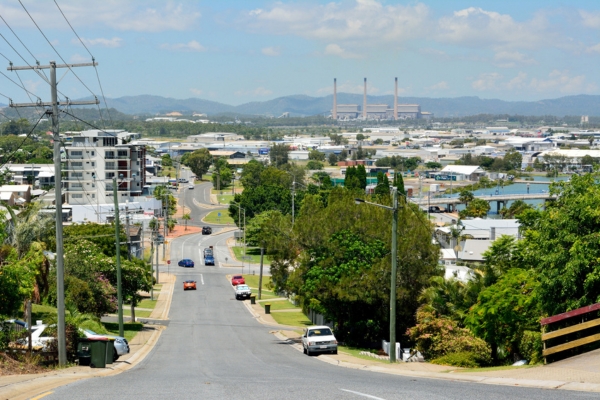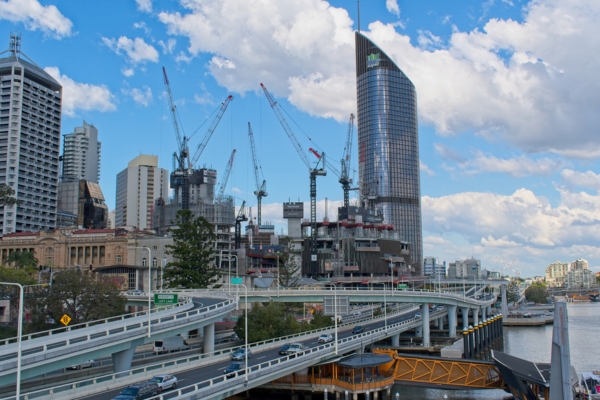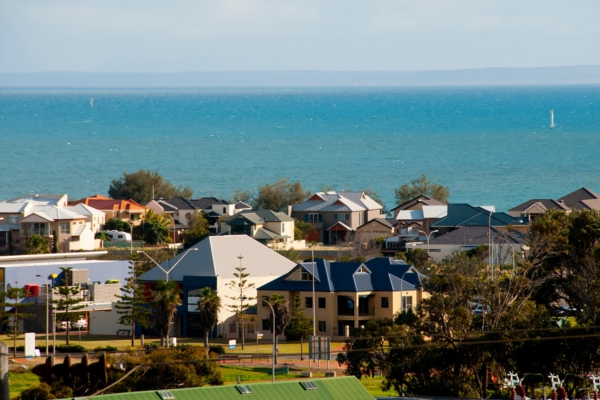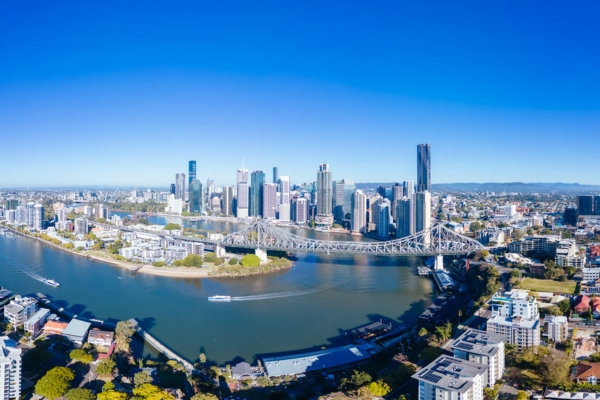Wealth Street Journal: Week 2, 2025
13 January 2025
Top 5 headlines from this week’s Australian real estate news
- Australia’s property market thrives: Despite sensational media headlines, the Australian property market remains strong, with 11 of 15 regions experiencing growth in 2024.
- 2025 market shifts ahead: Key drivers like interest rates, population growth, and construction costs will shape the 2025 property market, with supply challenges continuing to push prices higher.
- Investor activity surges nationwide: Investor loans are outpacing owner-occupier loans, driven by strong rental demand, rising yields, and migration, with Western Australia and Queensland leading the growth.
- Rising prices predicted 2025: National property prices are expected to grow in 2025, with momentum likely to pick up following anticipated interest rate cuts in the year’s second half.
- Affordability drives unit surge: Demand for more affordable housing is fuelling unit price growth, especially in Brisbane, Adelaide, and Perth, where units outperformed houses in 2024.
Australia’s property market thrives
Recent media commentary suggests Australia’s property market is on the brink of collapse.
Headlines claim widespread price drops and the end of the national property boom.
In reality, the situation is far from this narrative.
Australian property markets are often misunderstood due to oversimplified and sensationalised media reporting.
A recent example is how the media has portrayed CoreLogic’s latest data, which showed a 0.1% dip in the national average due to price declines in Sydney and Melbourne in December.
This led to headlines declaring market decline and falling prices.
However, most markets are seeing continued price growth, with national house prices up 5.2% in 2024.
Australia’s property market consists of 15 jurisdictions—eight capitals and seven regional markets. Eleven of these regions experienced growth in 2024.
Prices rose over 10% in Brisbane, Adelaide, Perth, Regional Queensland, Regional South Australia, and Regional Western Australia. Smaller increases occurred in Sydney, Darwin, Canberra, Regional NSW, and Regional Tasmania.
The data indicates a slowing in growth rates for booming markets like Perth rather than an overall market decline.
In most major markets nationwide, house and unit prices are still on the rise.

2025 market shifts ahead
Predicted interest rate cuts, low supply and other economic factors will continue to have a big impact on the property market in 2025.
Mortgage Choice outlines seven factors that will impact the property market this year:
- Inflation: Underlying inflation remains too high, which increases household costs, which can lead to interest rates remaining higher for longer, reducing buyer borrowing capacity.
- Interest rates: Many expected interest rate cuts in late 2024, but that did not occur. Some are predicting three cuts in 2025, starting in April.
- Labour market: The labour market remains strong, with positive job creation, high employment participation and an unemployment rate of 3.9%. For inflation to reach its target, the unemployment rate will need to rise to 4.5%. There is no sign of that happening soon.
- Population growth and migration: Population growth has slowed slightly but remains well above the long-term average of 1.4%. This boosts demand for housing, pushing up prices.
- Mortgage lending: Lending continues to rise, which is driving housing demand and pushing prices up.
- Construction costs: Material costs increased by 1.4% in the year to September 2024 and are 34.3% higher than at the start of the pandemic. While the pace of growth is slowing, costs are unlikely to drop, leading to higher housing costs.
- Supply: The Federal Government’s Housing Accord aims to build 1.2 million new homes by 2028–29. Dwelling approvals have increased but remain far below the level needed to meet the annual target.

Investor activity surges nationwide
Property investment loans are growing three times faster than owner-occupier loans, per Money.com.au’s latest Mortgage Insights report.
Investor loans surged 19% in the September quarter, compared to a 5% rise for owner-occupier loans.
Western Australia saw the largest growth in investor loans, up 43%, followed by Queensland at 24%.
Investor loans increased by 20% in New South Wales, 17% in South Australia, and 14% in the Northern Territory. Victoria and Tasmania recorded smaller increases of 5%.
Victoria’s market remains more focused on owner-occupiers due to less favourable conditions for investors. Owner-occupier loans for existing properties there rose by 7%.
According to the analysis in most states, investor loans have grown significantly faster than owner-occupier loans.
“The exception is Victoria, where the property market remains focused on owner-occupiers due to less favourable taxes and conditions for investors in that state,” it says.
Money.com.au Property Expert, Mansour Soltani, says investor activity is being driven by strong rental demand and rising yields, which is being fuelled by overseas migration, as well as strong property price growth.
REA Group forecasts continued investor growth throughout most of Australia. Its Hot 100 Investment Suburbs for 2025 tips locations outside capital cities as solid options.
Its ten most promising suburbs for investors are Broome, Rockhampton, Braitling, Geraldton, Kirwan, East Victoria Park, West Leederville, Bassendean, Mount Lawley and Bayswater.

Rising prices predicted 2025
While price growth slowed in late 2024, experts predict further increases in 2025.
Domain Group forecasts national house prices to rise by 4–6% and unit prices by 3–5%.
An expected interest rate cut in the second half of the year could boost market activity.
Domain Group Chief Economist, Dr Nicola Powell, praised the resilience of the housing market in 2024, with Brisbane, Adelaide, and Perth standing out.
However, she says that with more listings on the market and some buyers holding back with affordability concerns, the pace of growth will continue to slow in early 2025 and will only change when the RBA finally cuts its interest rate.
“An interest rate cut or targeted stimulus measures could trigger a wave of demand and spark price growth as the housing market responds to this newfound momentum,” Powell says.
“It may take one or two rate cuts to motivate buyers into action, and the timing of these cuts will shape market dynamics in 2025, perhaps creating a year of two halves, with a weaker first half and a stronger second.”
Domain predicts the unit market will gain further momentum in 2025.

Affordability drives unit surge
Affordability remains a key focus for buyers, driving growth in unit prices, according to PropTrack’s January 2025 Home Price Index.
Over the past year, unit prices have outpaced house prices in Brisbane and Perth, while in Adelaide, the two markets performed equally.
Unit prices rose 18.8% in Perth compared to a 17.5% increase for houses. In Brisbane, unit prices rose 15.4%, surpassing the 10.6% increase in house prices. In South Australia, unit prices climbed 13.1% compared to 13.6% for houses.
Even in Melbourne, where both house and unit markets recorded a decline in the past 12 months, the unit market fared better, with a 1.6% drop compared to a 2.7% decline for houses.
Senior Economist Anne Flaherty highlights strong demand in Brisbane, Adelaide, and Perth as a key driver of unit price growth in the past 12 months as a result of demand.
CoreLogic Research Director, Tim Lawless, notes that the most affordable quartile in capital city markets experienced the highest value growth in 2024.

Catching up on Australian real estate news?
Read our last Australian real estate news article covering:
- Resilient new home sales: Despite a November dip, new home sales are on track to outpace 2023 levels, with steady buyer confidence fuelled by stabilising building costs and low unemployment.
- Rising property market confidence: Confidence in the property sector grew by 8 points in late 2024, driven by optimistic price growth expectations, despite affordability and supply challenges.
- Seasonal rental vacancy surges: Vacancy rates hit a 3-year high of 1.4% in November, with inner-city areas like Sydney CBD (6.4%) and Melbourne CBD (5.9%) seeing significant increases.
- Apartments above shopping centres: Scentre Group may develop residential apartments above Westfield shopping centres, leveraging urban locations to address housing shortages.
- Affordable suburbs in 2025: Experts named affordable suburbs with strong growth, including picks in Melbourne, Sydney, Brisbane, and key areas in South Australia and Western Australia.
Make property investment work for you
We transform market insights into actionable strategies. Property investment offers powerful benefits, including tax savings, debt reduction, wealth creation, and a secure retirement plan.
For buyers: Take your first step or make your next move with confidence.
For brokers and professionals: Whether you’re a mortgage broker, accountant, or financial planner, we empower you to grow your business by helping your clients invest smarter.

Get Started
Every success story starts with a leap of faith. Start a conversation with us.





